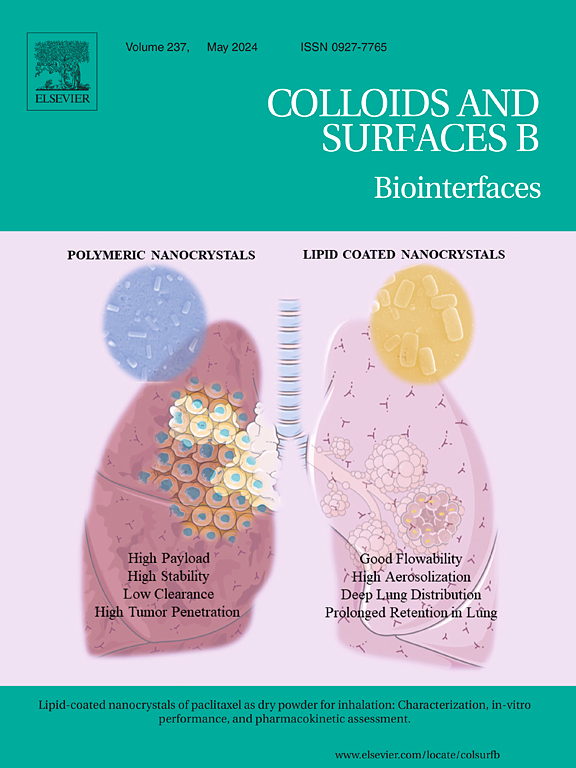Cerium-doped carbon dots as dual-target agents against Alzheimer's β-amyloid fibrillogenesis and reactive oxygen species
IF 5.4
2区 医学
Q1 BIOPHYSICS
引用次数: 0
Abstract
Both fibrillogenesis of amyloid β-protein (Aβ) and elevated levels of reactive oxygen species (ROS) contribute to the pathogenesis of Alzheimer's disease (AD). Beyond Aβ aggregation inhibition, the complexity necessitates the development of comprehensive therapeutic interventions for halting AD progression. Herein, a dual-target agent capable of Aβ aggregation inhibition and ROS scavenging was synthesized by doping cerium into carbon dots (Ce CDs). Ce CDs with a high Ce (III)/Ce (IV) ratio of 0.67 can scavenge various ROS, including superoxide anion radicals, hydroxyl radicals, hydrogen peroxide, and Aβ40-induced ROS, thus mitigating cellular oxidative damage and rescuing cell viability. Additionally, Ce CDs present potent inhibition on Aβ40 on-pathway fibrillization, disrupting the formation of highly ordered β-sheet structures and increasing cell viability from 50.2 % to 91.9 %. It is validated that the electrostatic interactions between Ce CDs and Aβ40 are primarily responsible for preventing the conformational transition of Aβ40 monomers. In vivo experiments with the transgenic Caenorhabditis elegans strain further validate the bifunctionality of Ce CDs in suppression of Aβ fibrillogenesis and attenuation of oxidative stress, thereby demonstrating the potential of combination therapy for AD. This finding highlights the important role of electrostatic interactions between Aβ and inhibitors in regulating Aβ aggregation, and provides new insights into the development of multifunctional agents for AD treatment.
求助全文
约1分钟内获得全文
求助全文
来源期刊

Colloids and Surfaces B: Biointerfaces
生物-材料科学:生物材料
CiteScore
11.10
自引率
3.40%
发文量
730
审稿时长
42 days
期刊介绍:
Colloids and Surfaces B: Biointerfaces is an international journal devoted to fundamental and applied research on colloid and interfacial phenomena in relation to systems of biological origin, having particular relevance to the medical, pharmaceutical, biotechnological, food and cosmetic fields.
Submissions that: (1) deal solely with biological phenomena and do not describe the physico-chemical or colloid-chemical background and/or mechanism of the phenomena, and (2) deal solely with colloid/interfacial phenomena and do not have appropriate biological content or relevance, are outside the scope of the journal and will not be considered for publication.
The journal publishes regular research papers, reviews, short communications and invited perspective articles, called BioInterface Perspectives. The BioInterface Perspective provide researchers the opportunity to review their own work, as well as provide insight into the work of others that inspired and influenced the author. Regular articles should have a maximum total length of 6,000 words. In addition, a (combined) maximum of 8 normal-sized figures and/or tables is allowed (so for instance 3 tables and 5 figures). For multiple-panel figures each set of two panels equates to one figure. Short communications should not exceed half of the above. It is required to give on the article cover page a short statistical summary of the article listing the total number of words and tables/figures.
 求助内容:
求助内容: 应助结果提醒方式:
应助结果提醒方式:


